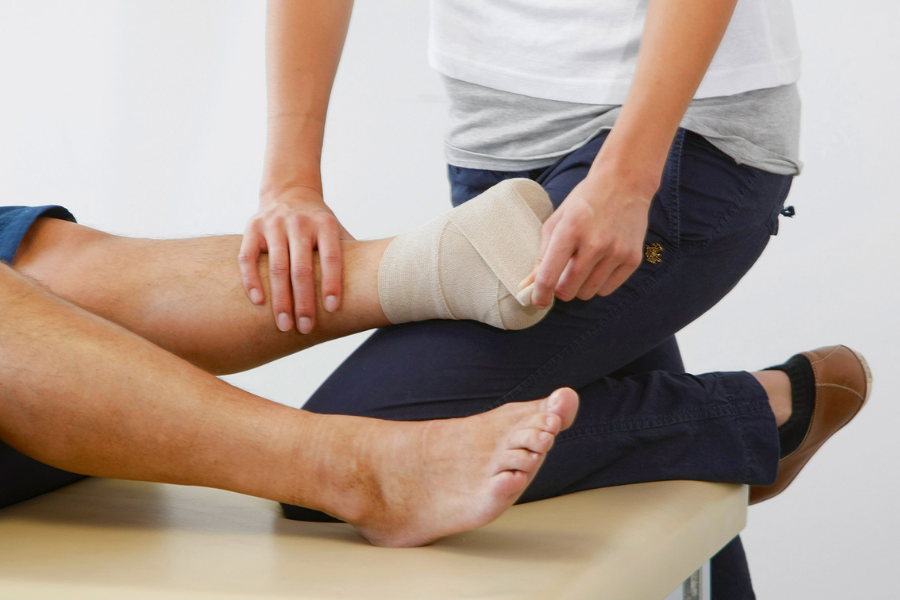Compression therapy using bandages
After your amputation, it is extremely important that you care for your residual limb properly from the very start. One way to promote healing is to wrap bandages around your residual limb. This is a slightly complicated, but highly effective form of compression therapy that helps reduce swelling.
The bandaging of your residual limb is customised to your specific situation. That makes this form of compression therapy suitable for any residual limb and amputation level.

Why do I have to bandage my residual limb?
A bandage places pressure on the residual limb, reducing swelling. This is necessary for a good and speedy recovery, but also to get the residual limb into the right shape for wearing a prosthesis. With bandaging, the bandages are removed regularly to check the condition of your residual limb. This is especially important right after your amputation, so that your therapist or nurse can check that the bandage is not too tight or too loose. Has the swelling gone down and the scar improved? Then you probably no longer need to wear the bandages. After a while, you only need to wear the compression bandage for a few hours a day, such as when wearing your test prosthesis.
How do you wrap the bandages?
While you are still in hospital, your nurse, therapist or doctor will apply the bandages. But you can also do this yourself. Your nurse, therapist or doctor will explain how to wrap the compression bandages after you return home. The most important tips?
- Make sure the bandages are not folded, wrinkled or too tight.
- When wrapping the bandages, use a plaster on top of the frequently used metal clips to avoid injury to your sensitive residual limb.
It is important that you are able to bandage your residual limb yourself, so do not hesitate to ask questions if something is not clear! The reason is that if you do not bandage your residual limb properly, it can swell again or your skin can become irritated.
How do I clean the bandages?
Since bandages absorb perspiration, it is very important to clean your bandages daily with a mild detergent or soap. You then remove the excess water by rolling up the bandages tightly between towels. We recommend drying your bandages flat and not hanging them to dry, so that they retain their elasticity longer.

For how long do I wear the bandages?
It is important to wear the bandages until your residual limb has healed completely. Only after all wounds have healed and the swelling of your residual limb is gone, you can try – in consultation with your doctor or therapist – to sleep one night without the bandages. Was your residual limb swollen the next morning? Continue the compression therapy for a little while longer.
Other types of compression therapy
Did you know that, in addition to bandages, there are other compression therapy techniques you can use? You can care for your residual limb using, for example, compression socks or a silicone liner. Your doctor, nurse of physical therapist will let you know which method is best for your situation.